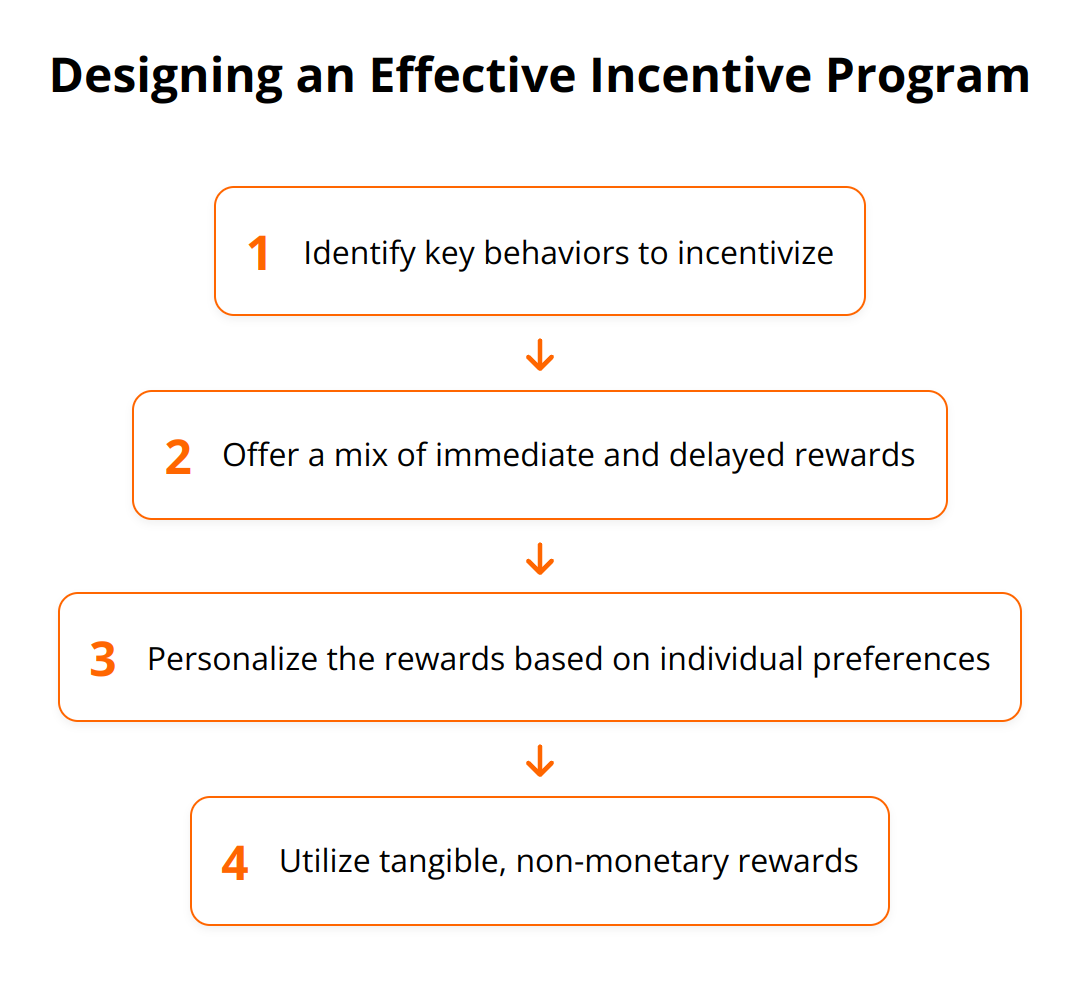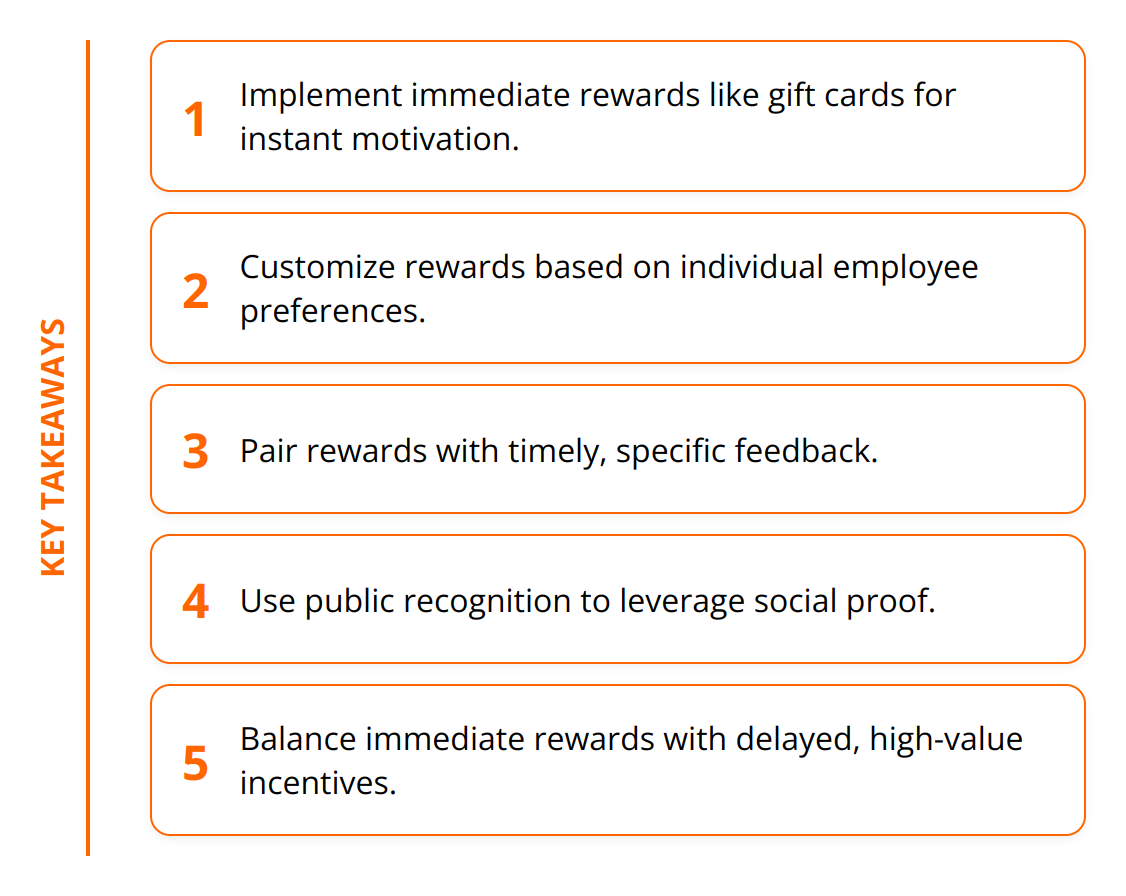
Designing incentive programs that truly engage and motivate requires a deep understanding of human behavior.
At Reward the World, we believe behavioral insights are the backbone of effective incentive strategies.
In this blog post, we’ll explore how these insights can be leveraged to design powerful incentives, backed by real-world examples and case studies.
How Do Behavioral Insights Influence Incentive Design?
Understanding human behavior is essential for creating incentives that actually work. It’s not just about handing out rewards but understanding what truly motivates people.
Understanding Motivation
People are often motivated by more than just monetary rewards. Tangible gifts, recognition, and experiences can drive engagement. For example, research shows that employees who receive non-cash incentives, such as trips or luxury items, often experience greater satisfaction and performance improvement. This is backed by the fact that 69% of employees are motivated more by non-monetary incentives than by cash alone.
Behavioral Economics in Play
Behavioral economics offers concrete ways to design better incentives through insights into human behavior. Immediate rewards enhance motivation more effectively than delayed ones. A study by Dan Ariely, behavioral economist, highlighted that immediate rewards reinforce positive behavior more effectively. This immediate gratification helps link the reward directly with the action taken.

Real-World Examples of Behavioral Insights
To see these principles in action, consider companies that incorporate behavioral insights:
- Google uses perks like in-house meals and fitness centers to create a positive and productive work environment. This taps into the idea that well-being and convenience can be powerful motivators.
- Salesforce offers personalized incentives, such as tailored training programs or unique experiences. Personalization addresses diverse employee needs and preferences, making rewards more meaningful and motivating.
- Retailers like Starbucks leverage loyalty programs that reward customers immediately through points that can be used for future purchases, creating a strong incentive to return.
Here are some practical tips:
- Immediate Tangible Rewards: Implement rewards that employees can enjoy right away, such as gift cards or instant recognition awards.
- Targeted Feedback: Pair rewards with specific, timely feedback to reinforce the behavior you’re looking to encourage.
- Personalized Incentives: Customize rewards to fit individual employee preferences, increasing the perceived value and effectiveness.
For more insights on effective incentive schemes, check out this guide.
Understanding and implementing these behavioral insights can lead to more engaged, motivated, and high-performing teams.
What Are Effective Strategies Using Behavioral Insights?
To create impactful incentive programs, you need strategies grounded in behavioral insights. These strategies focus on the what and how of motivation, combining psychological understanding with practical application.
Tailoring Incentives to Specific Audiences
Understanding your audience is the foundation of effective incentive design. Not everyone is motivated by the same things. Segment your audience based on preferences and behaviors. Personalized rewards can increase engagement by up to 50%. For instance, if a team values career growth, offer training opportunities. If they value experiences, consider travel incentives. Use surveys and data analytics to identify what your audience finds motivating.

Leveraging Social Proof and Norms
Humans are naturally influenced by the actions of others. Social proof can be a powerful motivator. Highlighting how peers are benefiting from the program can boost participation. Implementing a public recognition system can leverage social norms to encourage positive behavior. For example, recognize top performers in company-wide meetings or internal newsletters.
Incorporating Immediate Rewards vs. Delayed Gratification
Immediate rewards are most effective for short-term motivation. According to behavioral economics, they can lead to a significant increase in desired behaviors. Offering instant rewards like digital gift cards or on-the-spot bonuses can boost performance quickly. For long-term motivation, balance immediate rewards with delayed ones that build anticipation and long-term engagement.
- Immediate Rewards: Digital gift cards, instant recognition awards, consumable goods.
- Delayed Rewards: Annual bonuses, recognition trips, luxury items.

A study showed that immediate rewards increased productivity by 25% within the first month. By combining instant rewards with those that require sustained effort, you can create a balanced approach to motivation.
To learn more about how to design customer appreciation rewards that resonate, check out this guide.
Utilizing these behavioral insights not only enhances motivation but also ensures that incentives are meaningful and effective. The right strategies can transform your incentive program into a powerful tool for engagement and performance.
Do Behavioral Insights Actually Work?
Real-world examples demonstrate the power of behavioral insights in creating effective incentive programs. Let’s explore some cases that highlight the tangible benefits and successful implementation across various sectors.
Business Case Studies
The application of behavioral insights has yielded impressive results in the corporate world. For instance, IBM’s use of targeted incentive programs based on employee behaviors saw a 20% increase in sales performance. By offering a mix of immediate and delayed rewards, IBM managed to sustain motivation and align employee actions with business goals.

In another example, Accenture implemented personalized reward systems that acknowledged individual achievements and career milestones. This approach led to a 15% increase in employee retention, emphasizing the effectiveness of customized incentives.
Public Sector Incentive Programs
Behavioral insights aren’t just for the private sector. Public sector organizations have also seen substantial benefits. A notable case involves the UK’s Behavioral Insights Team (BIT), which designed incentive programs to boost organ donor registrations. By leveraging social norms and immediate online acknowledgment, the program increased registrations by 20% in the first quarter.
Similarly, a pilot program in the U.S. aimed at improving health outcomes for low-income families used immediate, tangible rewards like grocery vouchers for attending health check-ups. This initiative resulted in a 30% higher attendance rate.
Impact on Employee Engagement and Productivity
Incentive programs grounded in behavioral insights have a proven track record of boosting employee engagement and productivity. A study by McKinsey found that high-performing organizations are 40% more likely to use data and behavioral science in designing their incentive systems.
Here are some key reasons why these approaches work:
- Immediate Gratification: Rewards provided instantly after the desired action see higher engagement rates.
- Personalization: Tailoring rewards to individual preferences can increase effectiveness by 50%.
- Tangible Rewards: Non-monetary rewards like experiences and recognition can lead to a 20% boost in performance.

A case in point is how Google uses personalized, immediate, and tangible rewards to maintain high levels of productivity and employee satisfaction. Their efforts are mirrored by Salesforce’s customized programs, which increased their employee engagement by 18%.
For additional insights on making incentive programs impactful, explore these effective strategies.
Incentive programs incorporating behavioral insights are not just theoretical. Real-world case studies underline their potential to enhance motivation, productivity, and overall organizational success.
Final Thoughts
To wrap things up, behavioral insights have proven critical in crafting incentive programs that resonate and drive real results. By understanding human behavior, we at Reward the World and other innovative companies can better tailor our strategies.

Key points:
- Immediate rewards boost short-term motivation.
- Personalized incentives cater to individual preferences, enhancing engagement.
- Tangible rewards such as experiences and recognition are powerful motivators.
Behavioral insights are essential for modern incentive programs. They provide a framework for designing rewards that truly motivate, aligning both employee and organizational goals. Real-world examples from companies like Google, Salesforce, and IBM highlight the tangible benefits of leveraging these principles.
Implementing behavioral insights can elevate your incentive strategy. To see how a dynamic global incentives platform can support your efforts, visit Reward the World. With our robust analytics, seamless integration, and diverse reward options, you’re well-equipped to foster loyalty and enhance performance.
